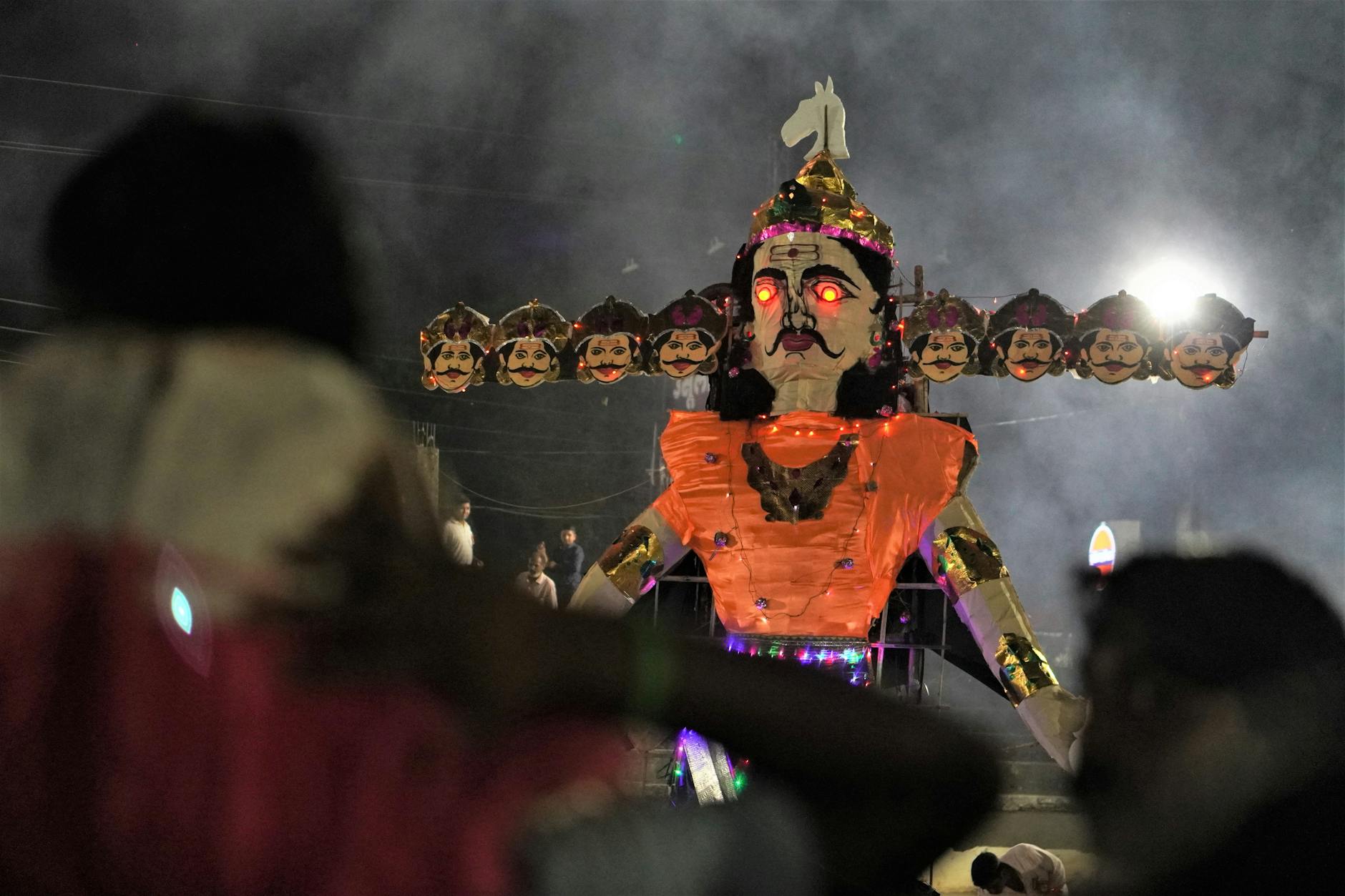The image of Ravana — the mighty king of Lanka from the Ramayana — is one of the most enduring symbols in Indian mythology. His ten heads, crowned and blazing with intelligence and pride, are instantly recognizable. Every year, during Dussehra celebrations, we see effigies of Ravana going up in flames, marking the victory of good over evil.
But here’s the real question: Did Ravana literally have ten heads? Or is there a deeper, symbolic truth behind this depiction that most people overlook? The answer is far more fascinating than the popular stories we grew up hearing.
The Literal vs. The Symbolic
On the surface, many traditional retellings describe Ravana as having ten actual heads. This literal interpretation paints him as a supernatural being with extraordinary physical form — a feature that adds to his aura of fear and power.
However, most scholars, ancient commentaries, and spiritual thinkers agree that Ravana’s ten heads were symbolic. They represented qualities, strengths, and flaws that made him both formidable and flawed — a man of extreme talents and equally extreme weaknesses.
The Deeper Meaning of the Ten Heads
In ancient Indian thought, especially in Vedic and Puranic traditions, numbers often carry layered symbolism. The “ten heads” of Ravana are widely understood to signify the ten aspects of human personality or mind that can either be harnessed for greatness or become a path to downfall.
Here’s what the ten heads are often said to represent:
- Kama (Desire) – Ravana’s intense wants and ambitions drove him to great achievements but also to destructive acts.
- Krodha (Anger) – His uncontrolled rage often led him to make reckless decisions.
- Moha (Attachment) – His obsession with Sita blinded his judgment.
- Lobha (Greed) – Despite being wealthy beyond imagination, he wanted more — power, women, and control.
- Mada (Pride) – His arrogance made him feel invincible, leading him to ignore wise counsel.
- Matsarya (Jealousy) – He envied anything he couldn’t have or control.
- Jnana (Knowledge) – Ravana was a brilliant scholar of the Vedas, music, and astrology.
- Vairagya (Detachment) – Despite his desires, he had moments of philosophical depth and ascetic practices.
- Shakti (Power) – His military and political strength were unmatched.
- Buddhi (Intellect) – He was exceptionally intelligent and strategic, capable of deep thought and planning.
This combination made Ravana a complex figure — not purely evil, but a mix of brilliance and darkness.
Why Ten?
The number ten in Indian philosophy often denotes completeness — as in the ten directions (north, south, east, west, and the four intermediates, plus up and down), or the ten avatars of Vishnu. By giving Ravana ten heads, the Ramayana presents him as a man with a “complete” range of human qualities — the good, the bad, and the dangerous.
The Spiritual Lesson Hidden in the Symbol
If we take the ten heads as representing different traits of the human mind, Ravana becomes more than a villain — he becomes a mirror. His story warns us that no matter how gifted we are, if our desires and emotions overpower our wisdom, destruction follows.
In fact, some versions of the Ramayana even suggest that Ravana’s downfall wasn’t due to a lack of intelligence or power, but because he could not control the vices represented by his own “heads.” His ego (Mada) and desire (Kama) overruled his intellect (Buddhi) and wisdom (Jnana).
Ravana: The Scholar-King We Forgot About
While he is primarily remembered for abducting Sita, Ravana was also an unmatched scholar, a skilled musician, and a capable ruler who turned Lanka into a golden city. The same ten heads that symbolize his vices also reflect his virtues — his deep knowledge of the Vedas, mastery over musical instruments like the veena, and understanding of astrology and medicine.
This duality is important: Ravana was not a one-dimensional villain, but a deeply layered personality.
The Modern Relevance of the Ten Heads
We all have our “ten heads” — different sides to our personality. Some lift us up, others pull us down. Ravana’s story serves as a reminder to master the vices and balance the virtues, or else even the greatest of strengths can lead to ruin.
In that sense, burning Ravana’s effigy every year isn’t just about destroying evil in the world. It’s about symbolically burning the uncontrolled desires, anger, greed, and pride within us.
